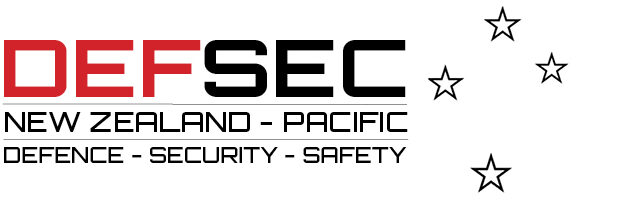
Whether you’re attracting students to university campuses, tenants to commercial real estate, or new talent to your organisation, moving access control to smart devices can give you a competitive edge.
By 2025, millennials will comprise nearly 75% of the workforce, with Gen Z coming in at around 27% — a number that will skyrocket in the coming years. And they have expectations that are very different to the generations before them.
According to the Gallup report How Millennials Want to Work and Live, millennials change jobs more often than other generations. About 21% of Millennials report switching jobs within the last year, and 62% are open to a different opportunity.
That’s all the more reason why workplaces and campuses are evolving to account for the technological expectations of today’s workers and students.
Gen Z will need the latest technology that allows them to stay connected and work efficiently, says a report by New Zealand workspace specialist Crestline. “A company’s technological sophistication will impact their decision to work there and stay working there.”
Mobile credentials are a big part of this evolution. Most Gen Zs grew up with mobile devices, and it’s how they prefer to pay for things, enter concert venues and pass through airports.
“… organisations can achieve the greatest implementation success by allowing mobile access use for every application in their environment.”
Gone are the days of employers banning or limiting mobile device usage in the office, for example. According to University of Galway professor Eion Whelan, despite traditional fears of the phones being a distraction in the workplace, research shows that job performance is not adversely affected by phone usage – and overall wellbeing of workers is enhanced by it.
Mobile access taps into this new reality, simplifying controlled access to premises while elevating the user experience, strengthening security, and boosting operational efficiency — and doing so sustainably.
The Benefits of Going Mobile
The convenience of mobile devices has profoundly reshaped how products and services are delivered, including mobile access. And the benefits of mobile access go well beyond controlling access to premises:
1. Convenient security
Moving access control to mobile devices and wearables offers choice and convenience to end-users, including the use of tap or gesture-based technologies. Better still, all kinds of access use cases can be integrated into a single credential.
It’s with this type of convenience in mind that Charter Hill, a leading Australian property group, integrated HID contactless access into its workplace app for tenants at its Wesley Precinct in Melbourne.
“HID Mobile Access allows secure, seamless access from street-to-seat and frees up everyone to focus on more valuable work,” said Loren Mellowship, General Manager – Wesley Place
2. Security & privacy sorted
Whereas traditional plastic low-frequency cards possess well-known security vulnerabilities, including being easily cloned, the security protections built into mobile credentials make them highly secure.
Leveraging a cryptographically protected data model (SIO) with a multi-layered security feature, HID Seos, a software based and form-factor agnostic credential technology, is a trusted solution for securing identities and protecting privacy.
Ultimately, plastic access cards are relatively prone to being misplaced or stolen, whereas mobile phone users tend to closely guard their devices. In the case of an iPhone or Apple Watch, even if it is misplaced, the owner of the device can promptly use the Find My app to lock the device and help locate it.
3. Data-based insights
According to JP Morgan’s 2023 Business Leaders Outlook: Commercial Real Estate, “mobile credentials and cloud-based access control can help increase occupants’ safety, limit owners’ liabilities and streamline building operations.”
Mobile access combined with prop-tech building applications or location services enables building managers to accurately track usage patterns around things like heating, electricity, and amenities, and make better-informed decisions based on real data.
4. Enhancing sustainability
Access systems are not just about premises entry and exit. Importantly, mobile access can be integrated with smart building controls to enable building managers to operate facilities more sustainably.
By sharing occupant data, smart building systems can optimise operational efficiency by adjusting temperature settings, particularly in under-utilised areas of the building. This not only enhances comfort but also contributes to achieving green building goals by reducing energy consumption and lowering a building’s carbon footprint.
5. Drive engagement
Large commercial property firms, like Charter Hill in Australia, Silverstein Properties in the US, and sites such as London’s 22 Bishopsgate, are leveraging mobile access as part of their larger tenant experience apps. Integrating mobile access with engagement apps helps to drive repeated usage and increase the user experience. In doing so, it supports the ability of these apps to attract and retain the right employees, students, or tenants.

Making the Shift to Mobile
According to Nelson Fung, who leads Product Marketing for HID in ANZ, making a successful shift to mobile requires working through several key considerations around maximising usability, security, and long-term value.
1. Usability
If your mobile access system can’t provide a user experience that’s convenient, seamless, and smooth, your users will revert to the badges and key cards they’ve always used. Identify solutions that deliver mobile access use for every application in your users’ environment that.
- Support both iOS and Android devices
- Offer credentials that streamline the user experience by integrating with existing corporate apps and/or mobile wallets
- Provide readers that maximise flexibility by integrating with systems that enable users to unlock desktops, printers, cloud applications, and – of course – doors!
According to HID vice president and head of mobile Sanjit Bardhan, organisations “can achieve the greatest implementation success by allowing mobile access use for every application in their environment.”
2. Security
Mobile credentials offer clear security benefits over traditional access cards, but not all credentials are built equal. Barton recommends looking for:
- Mobile IDs that are encrypted with at least AES-128, developed by NIST to encrypt and decrypt sensitive data
- Systems that store mobile IDs on the access control reader’s Secure Element (SE), making them nearly impossible to extract
- Solutions that protect sensitive data by complying with international standards like ISO 27001, SOC2, and GDPR
3. Long-term value
Maximise the value of your facilities by selecting a mobile access solution that integrates easily with other building management and access systems. Specifically, says HID’s Fung, look for:
- Readers that maintain compatibility with existing access control systems by supporting Bluetooth® Low Energy, NFC, and physical smart cards
- Systems that support the Open Supervised Device Protocol (OSDP), a secure, open protocol that’s based on the IEC 60839-11-5:2020 standard for electronic access control systems
- Credentials that encode data in a format that’s easy to integrate with devices and systems from different vendors.
Given the opportunities offered by mobile access solutions that integrate with building management systems and employee engagement and other applications, decisions around the move to shift to mobile involves multiple stakeholders.
“Providing information for these stakeholders to better assess the value and functionality of a mobile access system helps make it easier to achieve cross-department cooperation,” explains Sanjit Bardhan.
As part of this, he says, making those involved in procurement decisions aware of the Total Cost of Ownership benefits of mobile access systems is important.
“While plastic credentials are typically a one-off cost, mobile credentials operate on a subscription-based model. Reputable manufacturers will provide cost of ownership tools that allow organisations to compare expenses in a standard use case.”
To find out more about making the switch to mobile, read HID’s guide Ready for Mobile Access? What to Consider Before Making the Switch.






